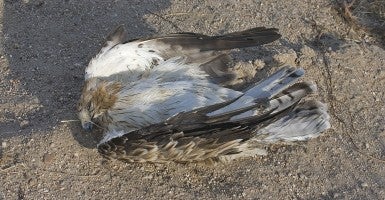ALBUQUERQUE, N.M.—Paul Domski is a falconer and a bird lover. And he seriously doesn’t like wind farms or the federal government’s recent decision to protect wind energy companies from punishment for 30 years for killing eagles.
“If I was the country’s energy czar, I’d get rid of [wind farms],” said Domski, who also is the mountain region director of the North American Falconers Association. “From an avian standpoint, from a biological standpoint, they’re a disaster.”
Domski was one of a few dozen people to show up Tuesday night at a “public scoping meeting” on eagle management by the U.S. Fish and Wildlife Service—one of five meetings the agency is holding across the country to gather comments about possible changes to the agency’s regulations.
One of the hottest topics is the 30-year permit the agency approved last December.
“The span of time that a wind project is operational is about 30 years,” Brian Millsap, U.S. Fish and Wildlife Service national raptor coordinator said. “So a five-year permit only covers them for one-sixth of a project’s life.”
Environmentalists are split when it comes to wind farms—embraced by some as a big part of the country’s renewable energy portfolio but disliked by others because of the number of birds that are killed by the turbines spinning in the wind.
“They look like they’re going slow,” Domski said, “but at their tips, they can move as fast as 150 to 160 miles an hour, and they just kill the birds.”
It’s hard to determine how many birds are killed each year. Last December, a study published in Biological Conservation estimated 140,000 to 328,000 fatal bird collisions each year at wind farms.
In a separate study, federal biologists say at least 85 eagles have been killed by wind turbines in the United States since 1997.






























